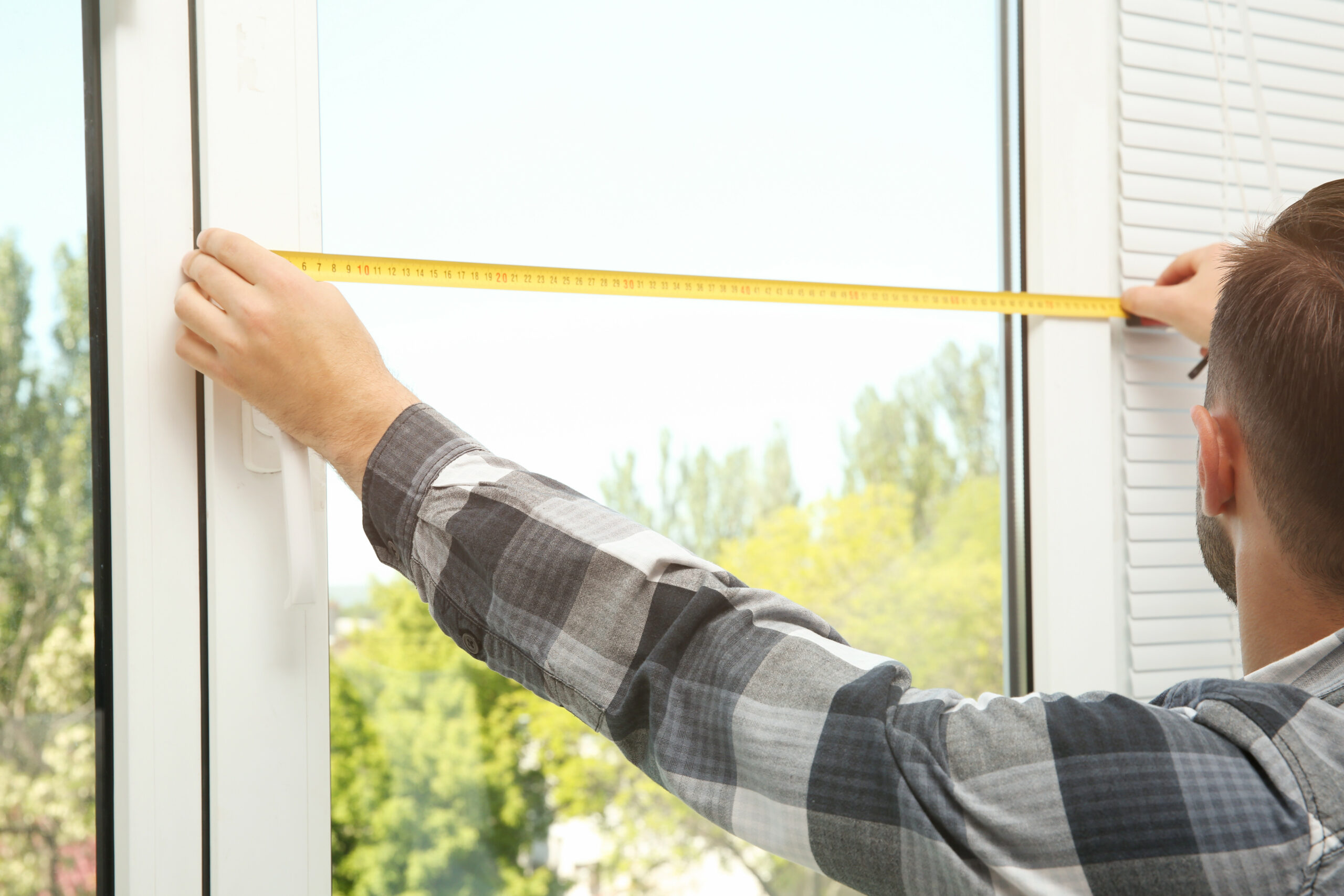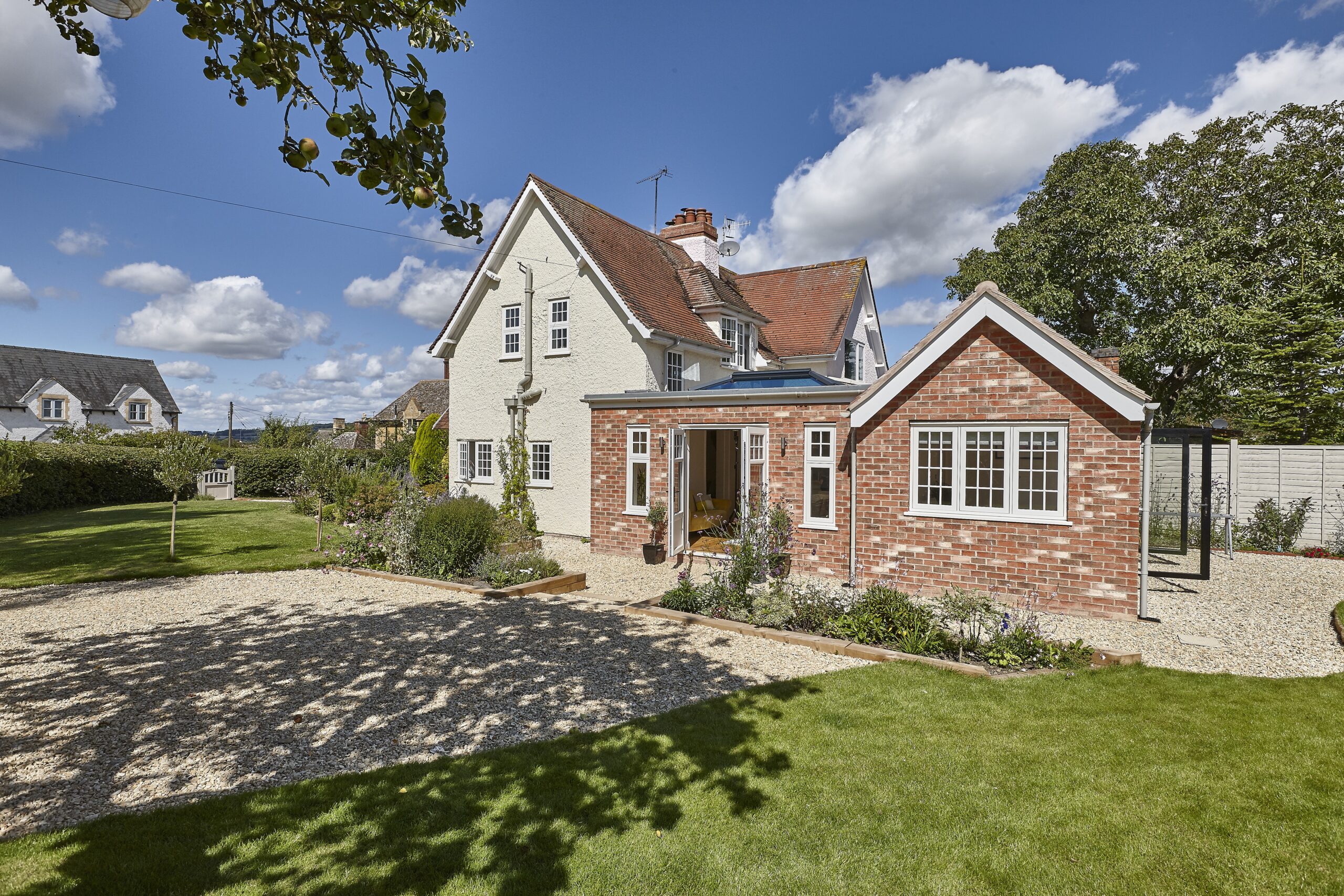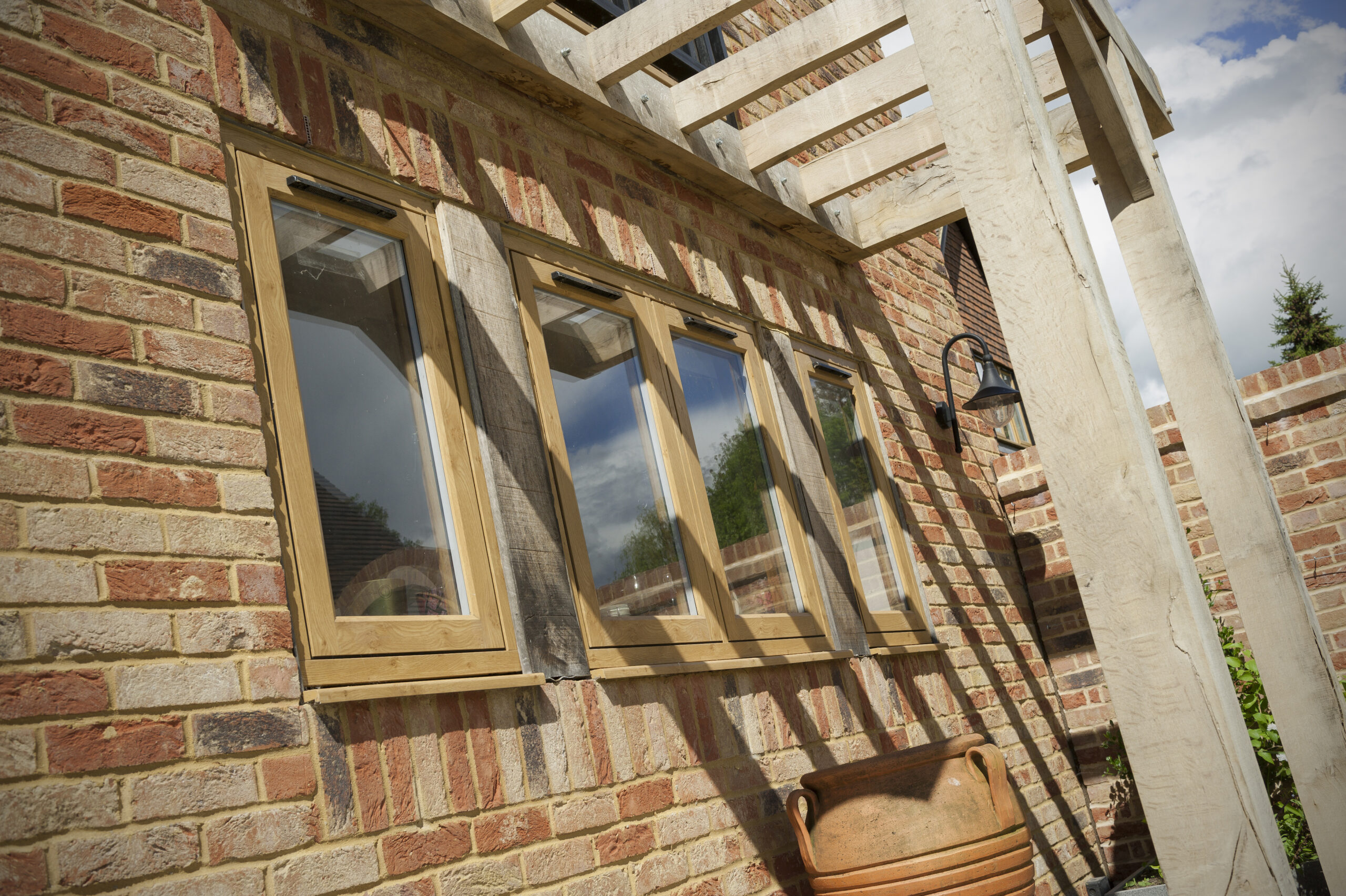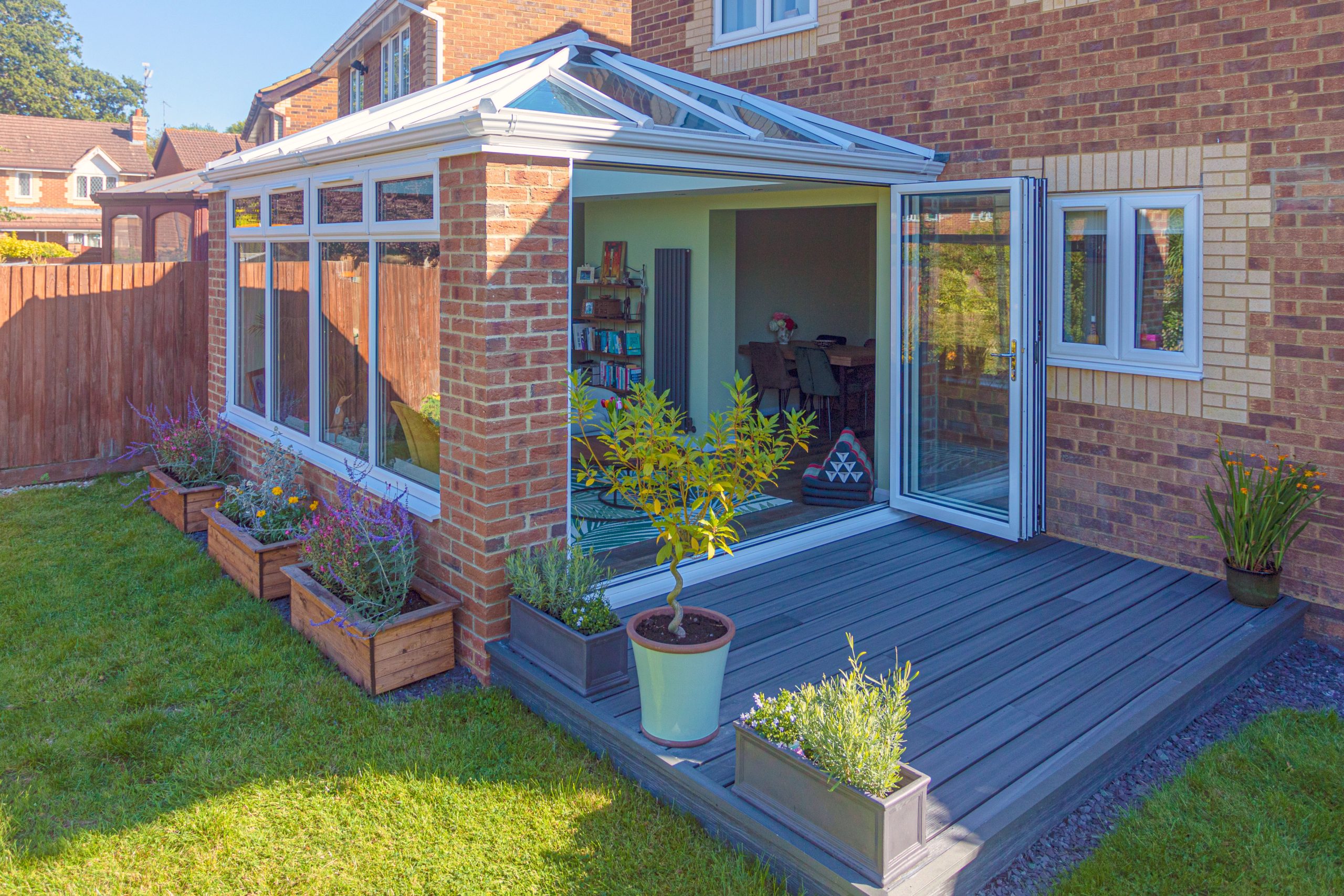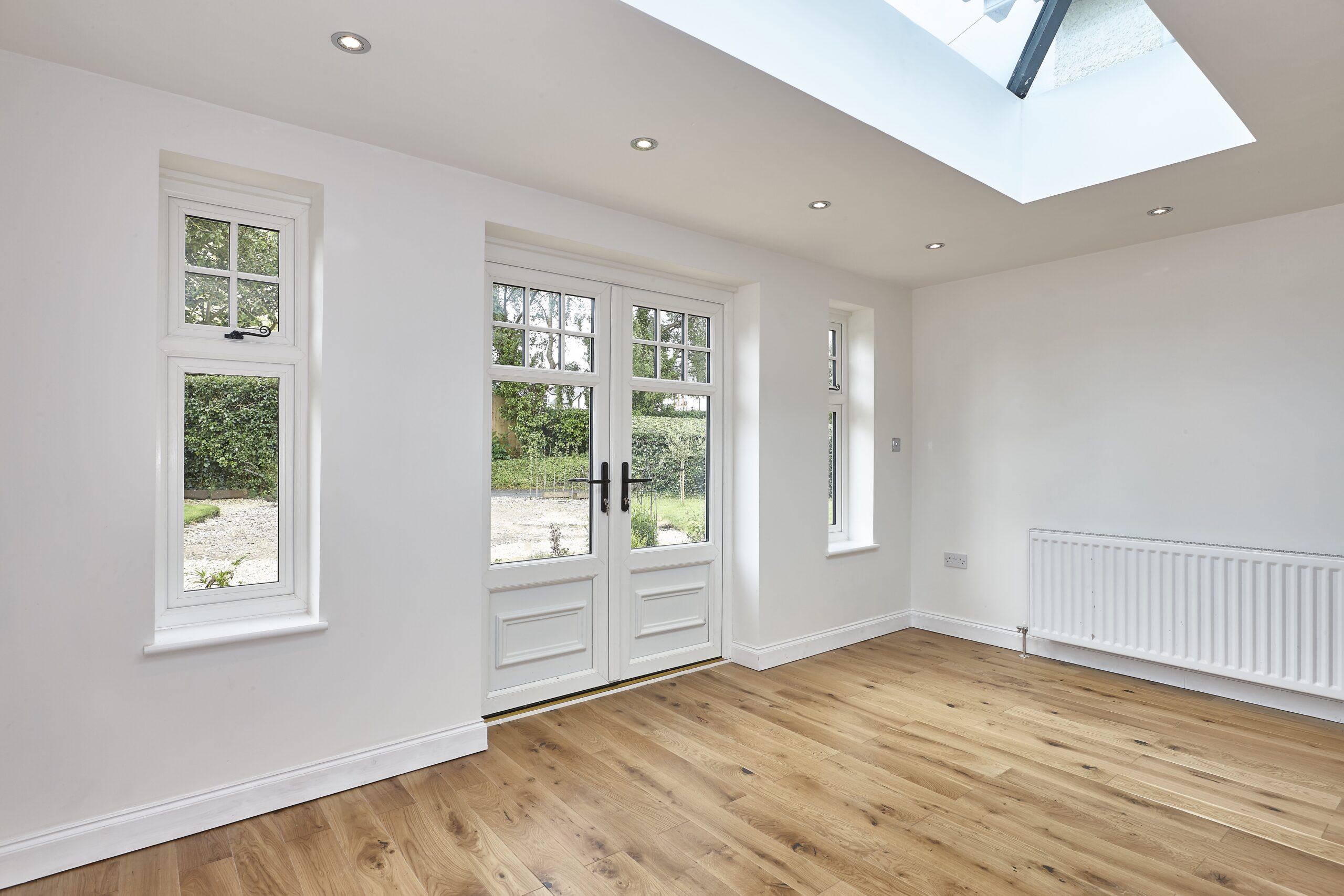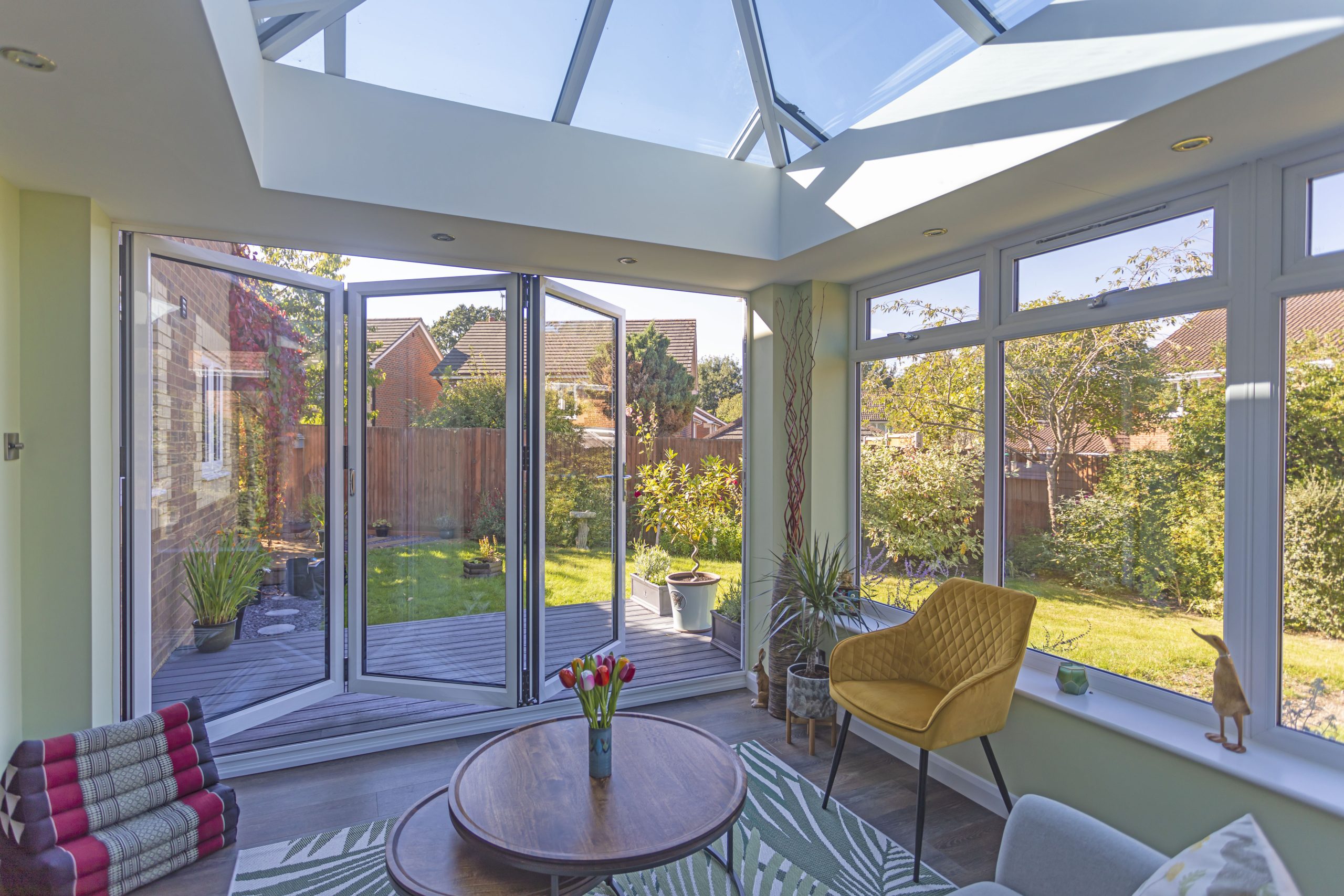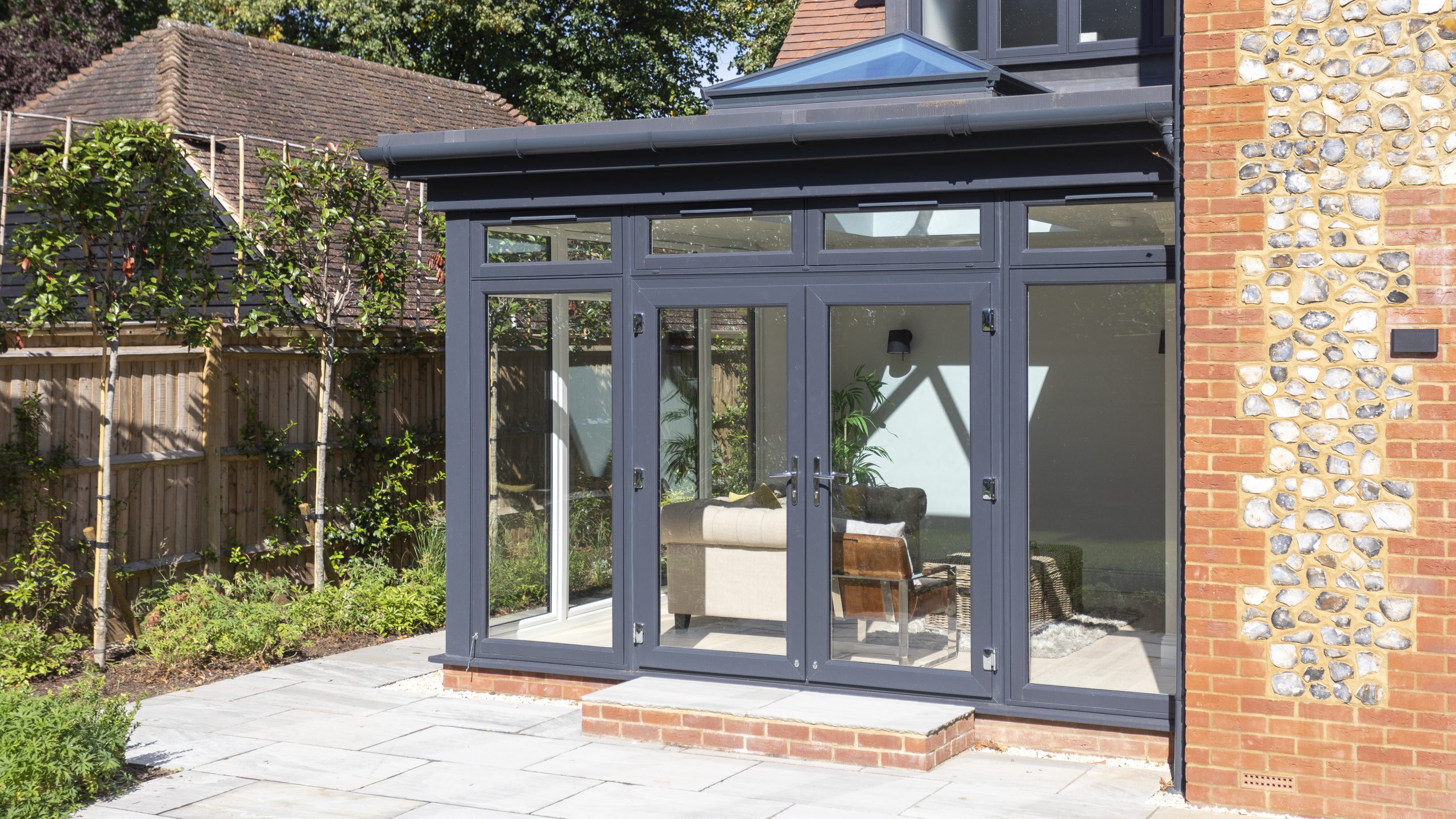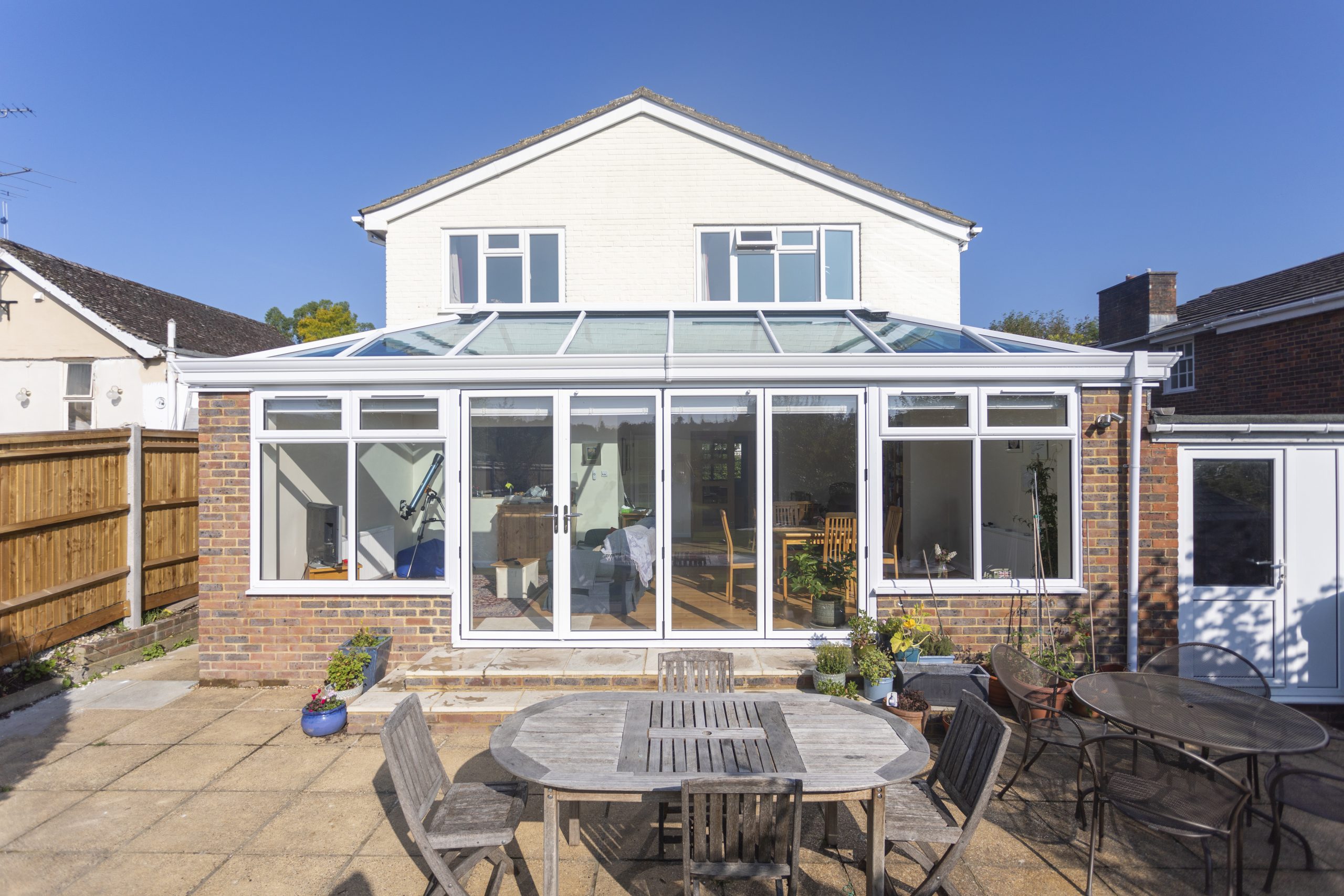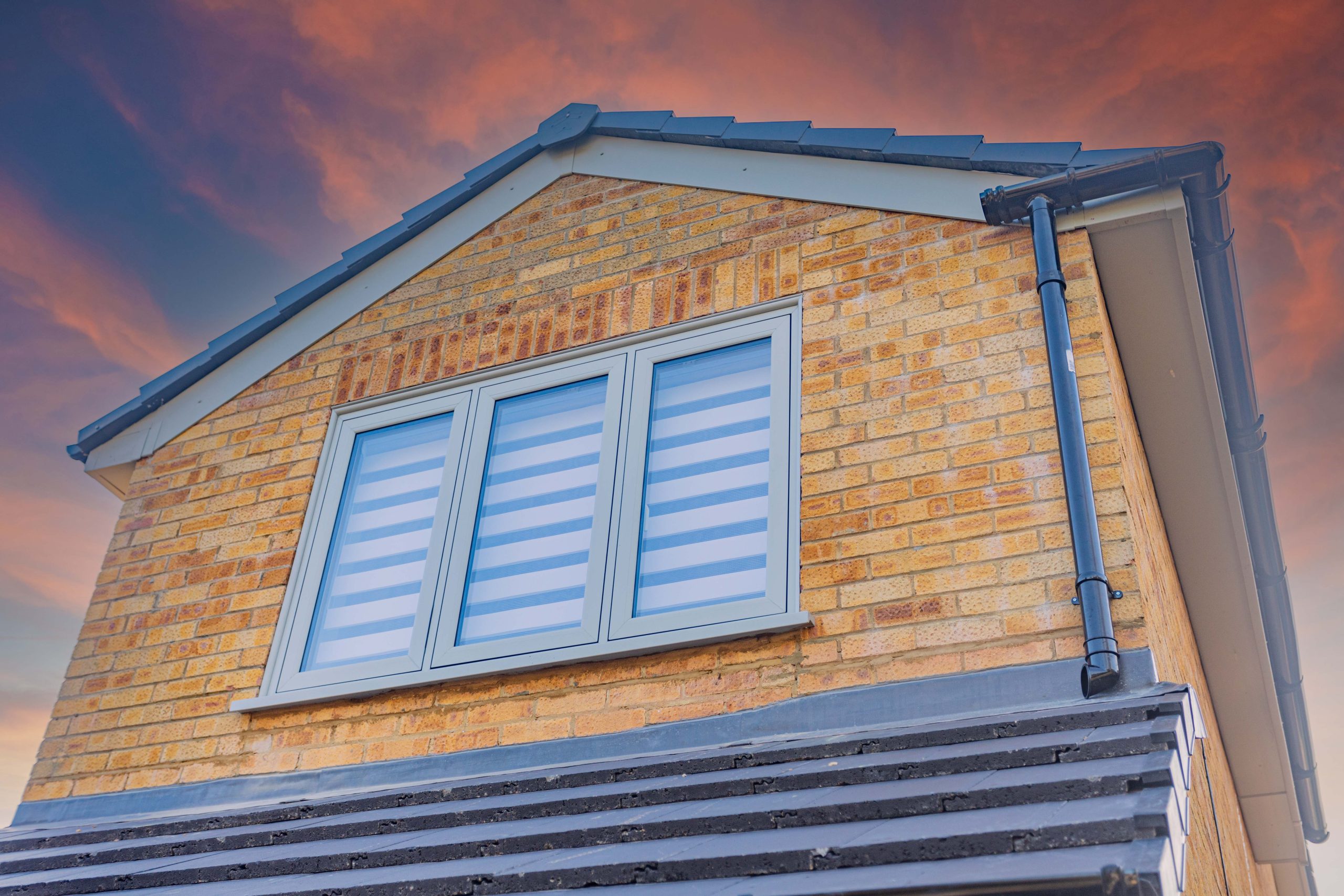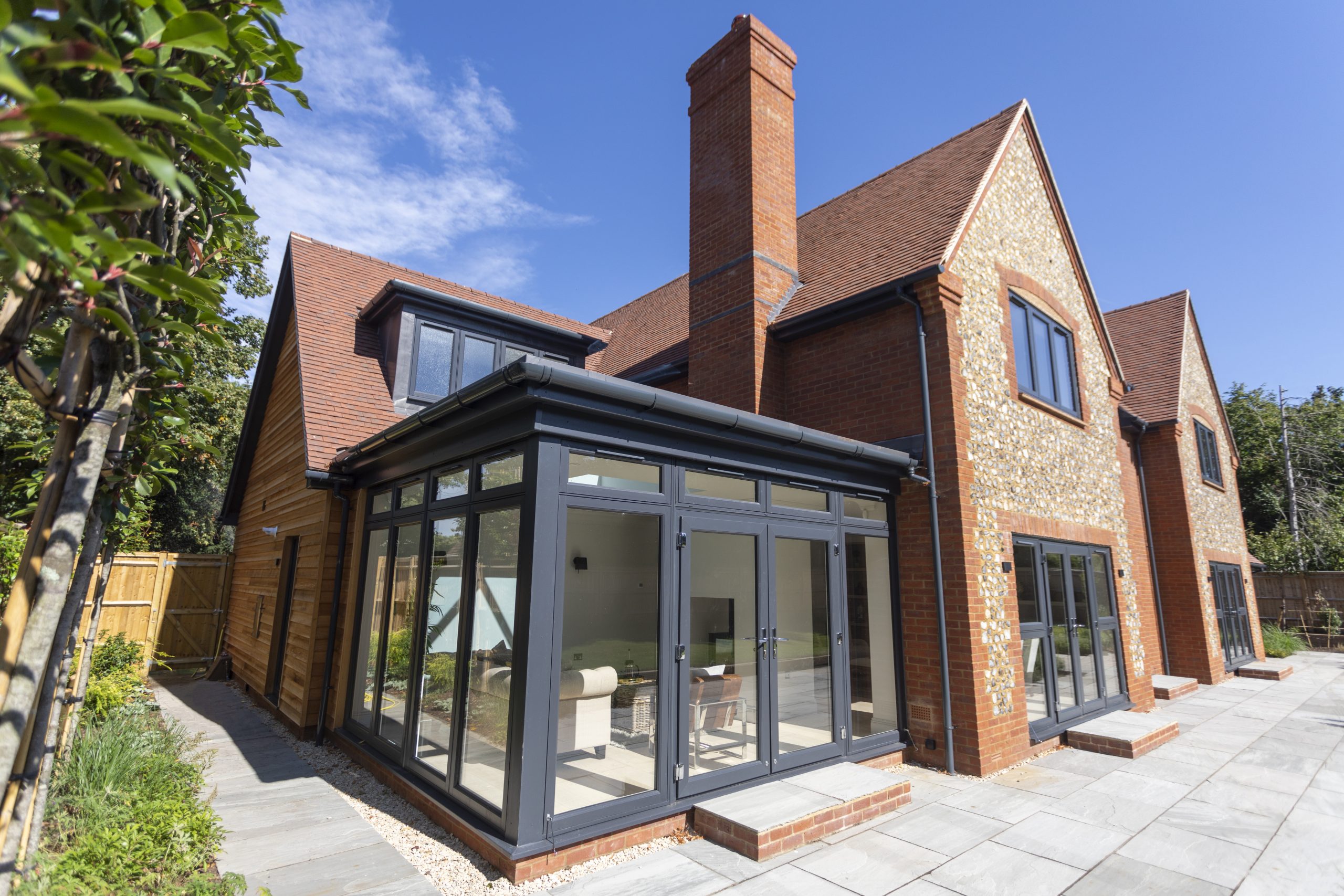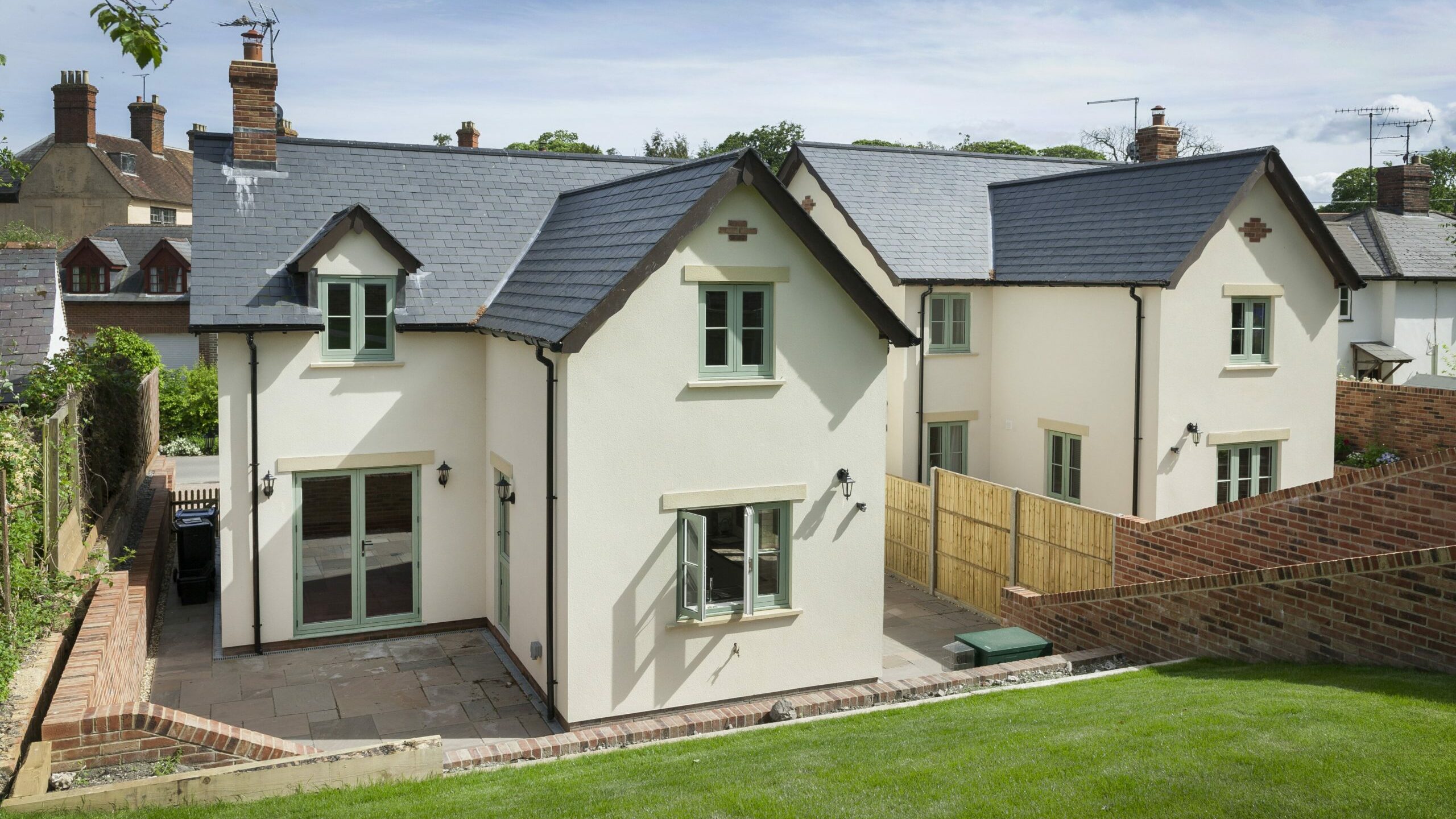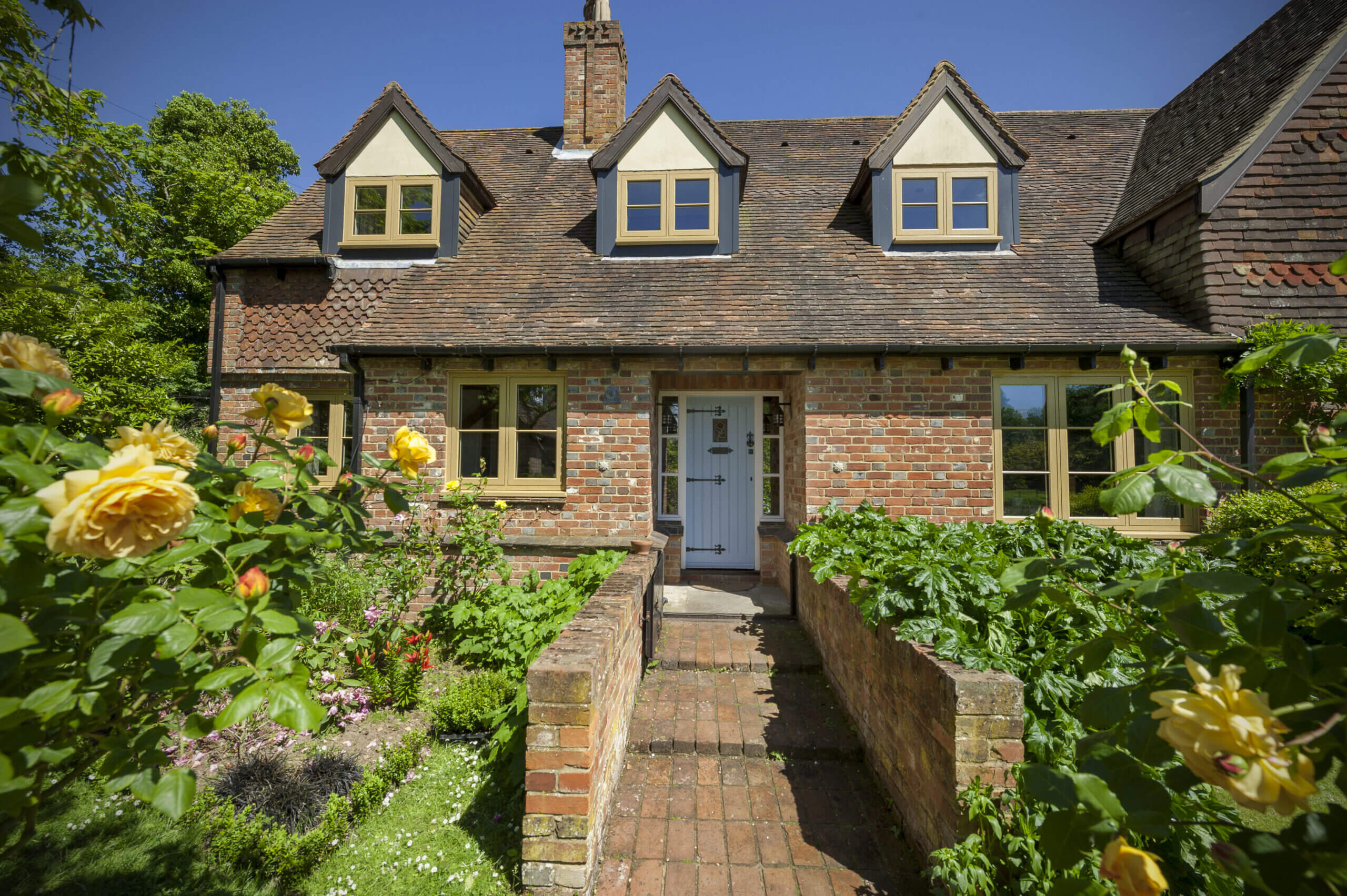Cracking in Your New Build, Extension, Conservatory or Window Installation
Most new builds will experience cracking at some point, no matter how well-designed or built they are. The cracks are not normally serious and are very unlikely to affect the stability of the building.
What causes cracking?
There are a number of reasons why cracking can occur, but it’s most likely to be because of drying shrinkage, thermal or moisture changes in building materials, or ground settlement.
Shrinkage
Shrinkage occurs during the initial drying out of a structure. Many of the materials used to build (such as mortar, plaster and concrete) contain a lot of water when they are built-in and can shrink as they dry out. This may lead to some minor cracks in walls and floors as your new build dries out over the first 18 months. Shrinkage cracks in masonry walls are usually vertical or horizontal, often running along the wall near the ceiling or near the floor. These cracks are usually a constant width (normally less than 4mm wide).
Thermal movement
Thermal movement is related to seasonal temperature and weather changes. Every building will shrink and expand as the temperature, moisture and humidity (the amount of moisture in the air) changes throughout the year. The various materials in the building respond differently to these seasonal changes, and these small movements can cause minor cracks to occur where the different materials meet one another. These cracks aren’t structurally significant but, if not attended to for a few years, they could become bigger if moisture gets into the cracks and freezes or dirt gets into the cracks and prevents the materials from returning to their original position. It’s common to find thermal movement cracks where an external wall joins an internal plasterboard wall, or where boards are joined together on a plasterboard ceiling. They can also be found around a concrete or steel lintel (above a window or door opening). Changes in temperature and moisture levels can cause timber to shrink, expand, twist and distort. This can lead to small cracks or gaps appearing at the joints and corners of skirting boards and architraves, and hairline cracks appearing on ceilings underneath the joists. Doors and windows can also get stuck in their frames. Some building materials are more susceptible to thermal cracking because they are brittle and less able to accommodate thermal shrinkage and expansion. These include materials such as concrete blocks, reconstituted stone building blocks, mortar, render and concrete lintels. Thermal movement cracks in walls are usually vertical and a constant width (normally less than 4mm wide), and they can open and close as the temperature, moisture and humidity levels change throughout the year.
Moisture movement
Moisture movement is related to the moisture levels within the materials of the home. Water vapour is invisible in air and is formed when you breathe and when you carry out normal daily activities in the home (such as taking showers and baths, washing and drying clothes, cooking and boiling kettles). Modern structures are built so that they minimise draughts and stop heat escaping, but they also reduce water vapour escaping. The building materials can absorb this moisture, causing them to expand. When the amount of moisture is reduced (for example, when the external temperature is warm or the central heating is turned on) the materials can dry out and shrink. Unlike shrinkage, which is caused by the building materials drying out in a new home, moisture movement is a continual process of wetting and drying due to the effects of living in our homes. Moisture movement cracks are usually vertical but depend on the material and its location in the building. They are usually a constant width (normally less than 4mm wide) and can open and close as the moisture levels change throughout the year.
Settlement
A home may experience some minor cracking as it settles down on its new foundations. The ground underneath the home can compact under the weight of the structure, which causes the home to move downwards. Settlement usually occurs in newer properties, but it soon stabilises. Sometimes sites are filled in to make them level before homes are built on the land. If the ground wasn’t compacted properly before the home was built, it can compact under the weight of the building and cause excessive settlement. This is very rare. Settlement cracks in walls can be vertical, horizontal or diagonal and in floors they aren’t necessarily straight. They can vary in width but, if crack widths are less than 4mm wide, they are unlikely to affect the structural stability of your new addition. Subsidence and heave are caused by the ground moving beneath or near to the home. If the ground beneath the foundations of a property moves, it can cause the property to move too. Movement is most commonly caused by the effect of trees and vegetation on clay soils, which can lead to the soils shrinking (subsidence) and swelling (heave). Other common causes of ground movement are defective drainage, weak ground (such as soft clays or silts, loose sands or gravels and peat) and mining activity in the past close to the property. Subsidence and heave cracks tend to be wide at one end and narrow at the other.
Minimising cracks
You can minimise cracking by following a few simple steps.
Heating and ventilation
· Try to keep an even temperature throughout your home, even in the rooms that you don’t normally use.
· When you first start using your central heating (in a brand new structure or after the summer months), try to use it sparingly so that the structure of your home warms up and dries out gradually.
· Keep your home well ventilated to allow moisture to evaporate as the structure dries out. You can do this by keeping windows open for as long possible each day, and by leaving trickle vents (slotted vents in the window frames) open – even in the winter when your heating is on.
Trees and shrubs
· Be careful when you choose trees and shrubs to plant in your garden.
· Woody shrubs (such as Pyracantha, Hawthorn and Photinia Red Robin) and trees that demand a lot of water (such as Elm, Eucalyptus, Oak, Poplar, Willow and some common Cypress species) can cause ground movement if they’re planted near to a home because they can absorb a lot of moisture from the soil.
· If you have clay soil, it is best to avoid planting trees nearer to your home than a distance equal to three-quarters of the mature height of the tree. Trees that demand a lot of water should be planted no closer to the home than one and-a quarter times the mature height. You should also avoid planting shrubs such as Pyracantha, Cotoneaster, Ivy, Virginia Creeper and Wisteria closer than 3 metres to your home. On all soils, allow enough room for trunks and large roots to grow safely, and be particularly careful if you’re planting near walls, drains or your neighbour’s home. Before cutting down or pruning a mature tree, check with your local authority to make sure that it’s not protected by Planning Conditions, Conservation Area Restrictions or a Tree Preservation Order.
If you find a crack
Although you may feel alarmed when you find a crack in your new build, it is usually nothing to worry about. It is very unlikely that your build will suffer from excessive settlement, subsidence or heave related movement, but if you think your property may be at risk, it is understandable that you will be concerned. If you don’t have a ruler or tape measure, you can estimate how wide a crack is by holding the edge of a one pound coin against it (the coin is about 3mm wide). A crack that is 4mm or less is generally regarded as being cosmetic and will not affect a property’s structural stability or safety. You can repair it using a suitable filler, grout or sealant the next time you redecorate your home. You may find that the crack reappears after a year or so, but this is likely to be due to thermal movement and isn’t anything to worry about - unless it is getting progressively wider. Although a crack is very unlikely to be serious (a building can move a lot before its stability is affected), you should keep an eye on it and watch for any changes.
When to contact Brackenwood
You should contact us if a crack:
· is more than 5mm wide at any point
· is wide at one end and narrow at the other
· is horizontal or vertical and the width is constantly more than 4mm
· is diagonal or stepped (of any width)
· is visible inside and outside the property
· runs horizontally along the line of the damp proof course (a layer of waterproof material between two courses of bricks or blocks to stop damp rising from the ground into the home) and the brickwork at the corners immediately above or below the damp proof course is uneven
· extends below the damp proof course
· is accompanied by changes to a number of your windows and doors (for example, if they have started to stick in their frames or swing open)
· has significantly widened or lengthened since you first noticed it.
Your Brackenwood Build is covered by a Ten Year Guarantee. We do not cover anything that is covered by legislation or other insurance. For example, we do not cover mining subsidence (which is covered by legislation) or damage due to ground movement that is not related to a defect in the original construction (which may be covered by your household insurance policy). It is also worth noting that most building insurers will not cover settlement but will cover subsidence. Settlement, moisture movement, thermal movement and shrinkage are normal expectations in any structure and are the responsibility of the customer. Any instances where cracks are more than 5mm will be inspected and a determination given in writing to the customer.









